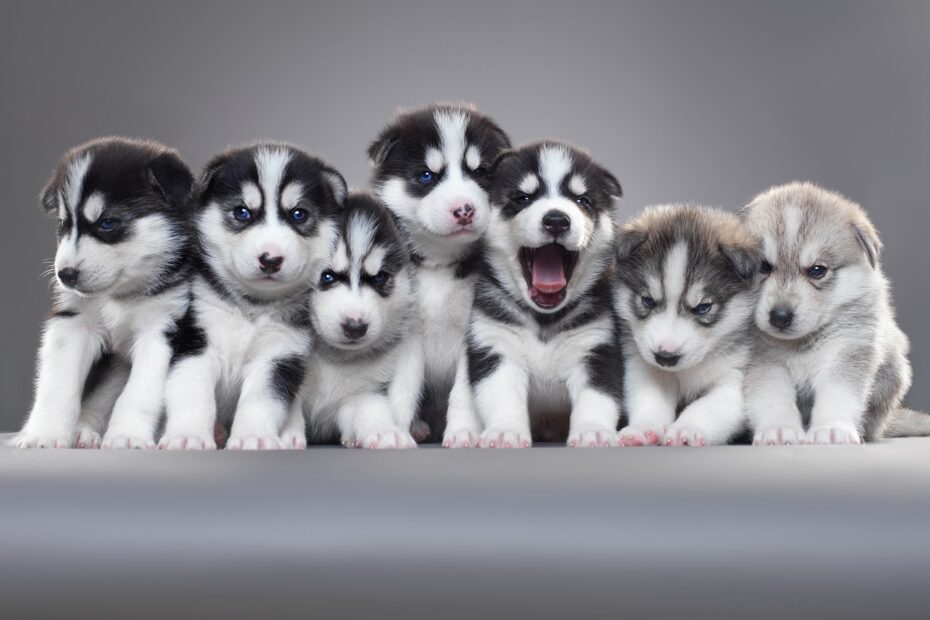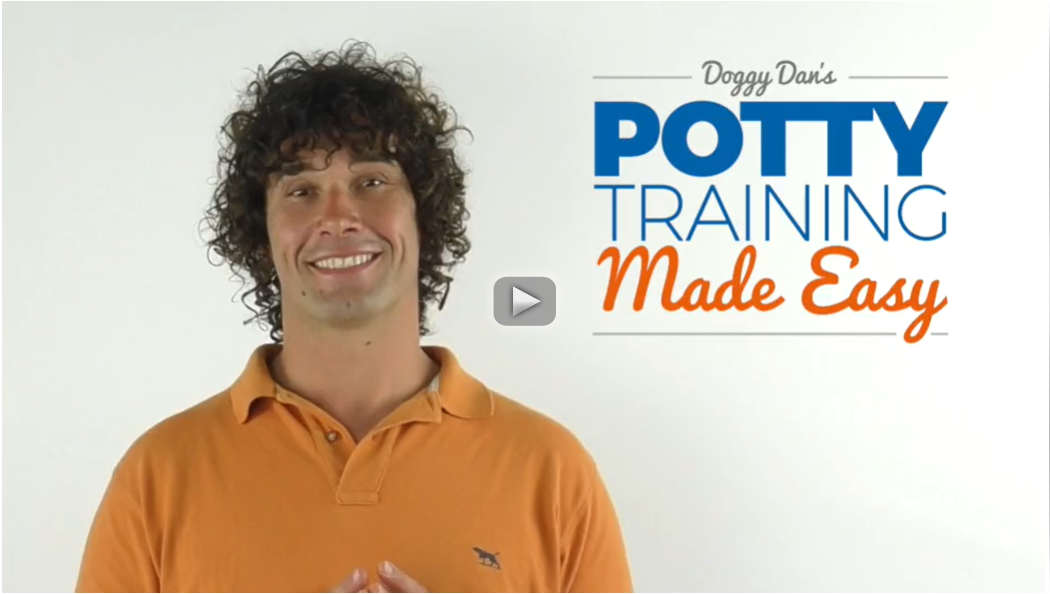If you’re wondering how to potty train a Husky puppy, then, first of all, congratulations on your new pup!
This active, energetic, resilient breed is a beauty. Those eyes! That coat! That tail! But Huskies are more than just supermodels. They’re also very smart.
When brains were being doled out, Huskies were at the front of the queue.
Teach them a trick or a new skill, and they’ll have it down in no time…
…If they want to.
If they don’t, it’s another matter entirely.
Because as much as Huskies are smart, they’re also stubborn. As in really, really stubborn.
But stubborn doesn’t mean untrainable. Neither does ‘challenging’ mean ‘impossible.’
Figure out the training techniques that Huskies respond to (and those they really don’t), and you can work those smarts to your best advantage.
Not that everything is going to be smooth sailing once you do. After all, potty training is rarely a walk in the park – not every day, anyway.
But regardless of the breed, potty training comes with sleepless nights, accidents, setbacks, and days when you’re going to wish you could fast forward through the whole thing.
However, stick with it. I know it may be tough, but the results will make the effort more than worth it.
Now, before we get into the ins and outs of potty training a husky. I’d recommend taking some time to watch this Potty Training Made Easy Course from Dan Abdelnoor. (see video below)
It’ll guide you through the process from start to finish, giving you a great starting point for your own training.
Take a note of what you see… you’re going to find Dan’s tips and tricks invaluable over the next few weeks.
(video will open in a new window)
Potty Training a Husky Vs Other Dog Breeds
While most dog owners think smart equals obedient, it doesn’t always work that way. In fact, it often goes the opposite way.
Take Huskies. Few dogs can match them when it comes to smarts. Unfortunately, even fewer dogs can match them when it comes to stubbornness.
So, why exactly are Huskies so stubborn?
For a start (and unlike most dogs), Huskies don’t really care whether they please you or not. It’s not that they’re massive jerks. It’s just their brains don’t work that way.
They were trained as sled dogs. That was their job, their whole reason for getting out of bed in the morning.
They got satisfaction from doing their job and doing it well. Whether or not they pleased anyone else in the process was by the by.
It might be a long time since most of them have seen a sled, let alone pulled one, but that thought process is still hardwired into their brains.
When they weigh up whether to do something or not, they’ll always go on what they think the best option is… regardless of whether you agree or not.
But that’s not the only thing that makes Huskies the stubborn creatures they are.
These are dogs with a pack-like mentality. They were bred to work together as a pack, listening to just one leader. If your Husky doesn’t see you as their leader, they’ll never listen to you.
All of this has a big impact on potty training. But don’t run away crying just yet.
Just because potty training a Husky is a little different to potty training a more compliant breed, it’s still very do-able.
After all, remember that while you might be dealing with a stubborn pup, you’re also dealing with a very smart one.
If you can remember these four basic things, you’ll have your Husky potty trained before you know it…
1. Be the Leader
Being a leader doesn’t mean acting aggressively or demanding.
Remember, you want your dog to respect you, not fear you.
Act confidently, rather than cockily, and always balance sternness with positivity to allow your pup to see you as their natural leader.
2. Keep Things Fun
Make your dog listen to your commands by introducing some fun.
Keep your voice upbeat and happy. Small though it sounds, it really can make all the difference.
3. Reward
Huskies thrive on rewards. Whether it’s with a treat or their favorite game, a reward will go a long way to motivating good behavior.
4. Think Short and Sweet
Don’t try and run before you can walk. Huskies get bored easily, and pups are easily distracted. Keep training sessions short and sweet to maximize the rewards.
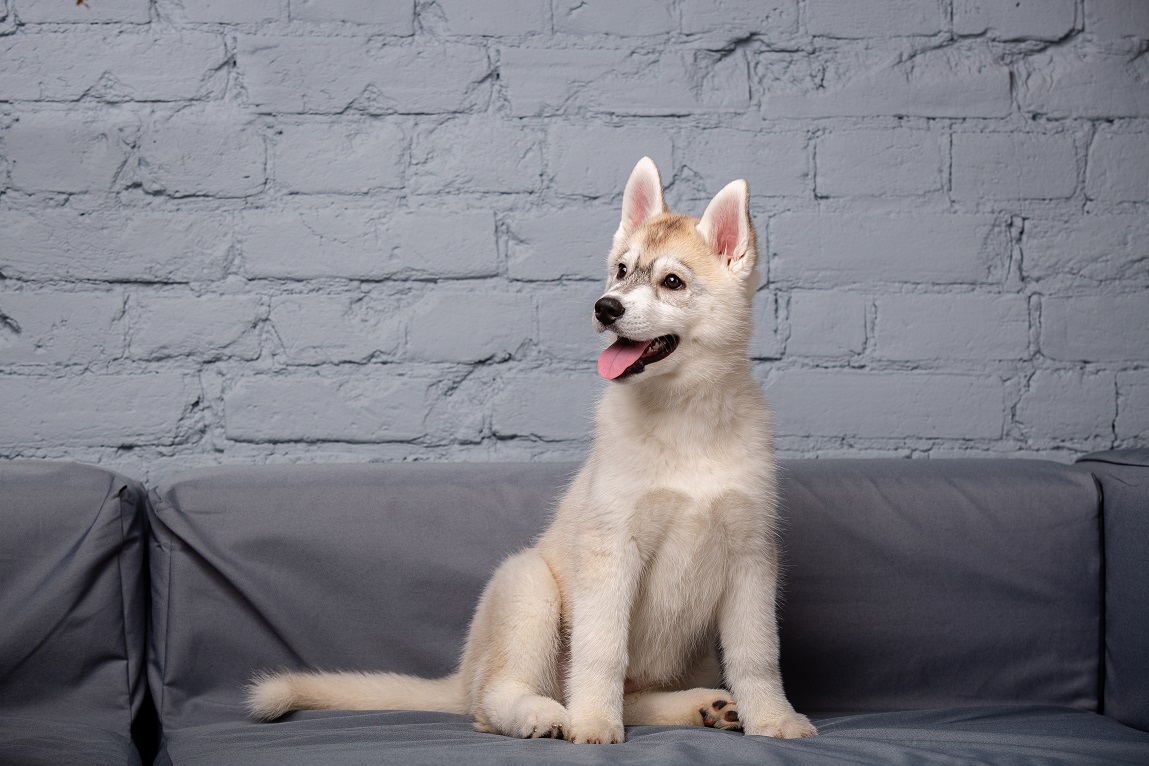
The Best Age To Start Potty Training a Husky Puppy
Typically, the best age to start potty training a Husky is between the age of 12 to 16 weeks.
By that age, they should be able to exercise enough bladder control to make potty training possible.
If you decide to start potty training earlier than this, always have a quick chat with your vet first.
Because if your puppy hasn’t yet received their full course of vaccinations. You’ll need to be very careful about keeping them away from areas that other dogs or wildlife can access.
However, if your puppy’s older than this, don’t panic. It’s never too late for a dog to learn.
Older dogs need lots of patience and perseverance (especially if they’ve become stuck in their ways). But potty-training older dogs is more than doable.
How to Potty Train a Husky Puppy – The Quick & Easy Way
Ready to get started? Here’s what you need to know.
Create a Designated Spot
Find a spot in your yard well away from where your family spends time. It doesn’t need to be a vast space. Providing it’s big enough for your dog to do their business in, it’s fine.
As puppies can be sensitive to loud noises and distractions, try to pick a spot in as quiet an area as possible.
Frequency is Key
Your pup’s toileting needs are easy to predict.
They’ll need to go after they eat, drink, sleep, nap, and play. To minimize any little accidents during the night, they’ll need to go again before bedtime.
Each time they’re due to go, take them to their designated spot and wait with them.
They won’t necessarily need to go each and every time. There may be times outside of these ‘slots’ that they feel the call of nature.
Even so, taking them to the designated spot in these key moments maximizes the chance of catching them during a moment of need.
Wait… and Wait Some More
Sometimes, pups can get so distracted by what’s happening around them, they forget what they’ve gone outside to do. They’ll only remember when they get back inside.
While that’s not always something you can avoid, don’t rush your visits to their designated spot.
If they don’t go immediately, wait patiently until they either go or you’re sure they don’t need to.
As an average, expect to hang around the spot for around 10 minutes or so during each visit.
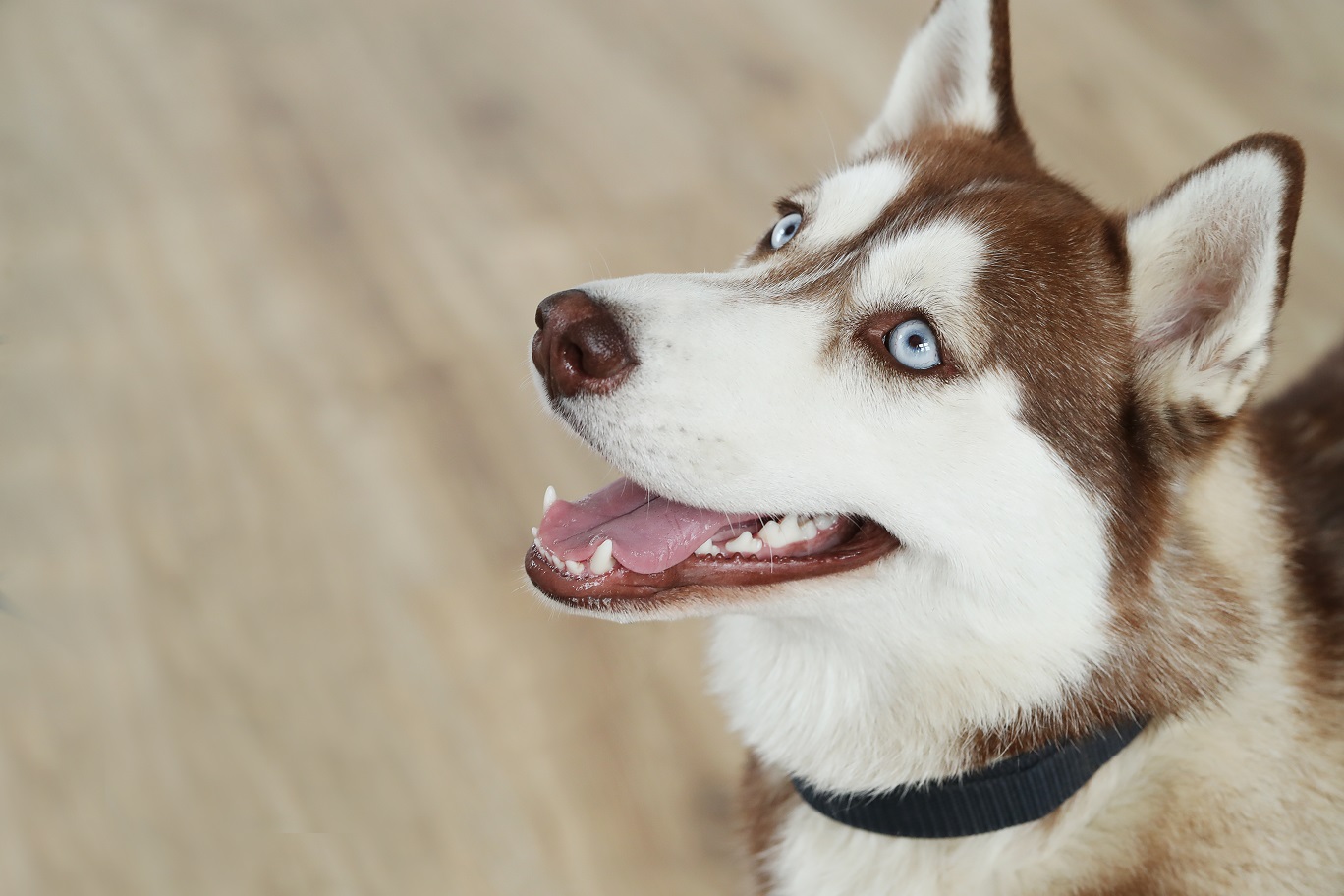
Praise Them
Huskies love a reward.
Once they’ve finished doing their business, lavish them with praise and treat them to a tasty titbit.
After a few successful visits, your pup will soon learn what a visit to their designated spot means…
…What they can do there
And the value of doing their business there rather than inside the house.
Take Them Away
The designated spot in your yard is for your puppy to use as a toilet only. It’s not for them to play in, train in, or hang out in.
To encourage them to associate that particular spot with doing their business, keep it out of bounds when it’s not being used for that exact purpose.
Repeat, Repeat, Repeat
Huskies love repetition. The more consistent and repetitive the training, the more positively they’ll respond to it. Use every opportunity possible to practice the training steps.
With frequent guidance, constant repetition, and plenty of patience, your Husky will soon respond.
Make a Routine
Pups are pretty predictable, at least as far as their potty needs are concerned. If they’ve had a meal, a drink, a nap, or a play, they’re going to feel the call of nature sooner rather than later.
To make things easier on yourself (not to mention them), it helps to create a schedule.
If you create set times for eating, napping, and playing, you’ll be able to set your watch by their bathroom habits.
Not only will a routine give a structure to their day (and Huskies do love structure!), it’ll minimize the risk of being caught off guard by a sudden bathroom break.
Watch Them Like A Hawk
Accidents are always going to happen, especially in the early days of training. But the more accidents you can prevent, the better.
Get to know the warning signs of your puppy needing to go.
If you see your pup circling, sniffing the floor, looking restless, hunching their back, or heading to a spot they’ve had an accident in before, it’s time for a visit to the yard.
Take a Step Back
Rushing into a potty-training schedule without having a definite plan in place isn’t a great idea.
Before anything else, take the time to work out a plan of action. If you’re not sure where to start, take a step back and watch the Potty Training Made Easy course from Dan Abdelnoor.
It’ll give you all the help, guidance, and information you need to get started. You’ll get to see what a successful potty-training program looks like from start to finish.
Watch it, take notes if you need to, then follow the advice. Trust me, it’s going to make the next few weeks far, far easier than they would be otherwise.
(video will open in a new window)
Consider Crate Training
Crates can be an invaluable tool in potty training.
Dogs hate soiling their sleeping area. By encouraging them to sleep in a crate, you’ll naturally encourage them to exercise control over their bladders.
But make no mistake. You can’t simply shove a crate into a corner of the room, pop your puppy in, and expect everything to be smooth sailing.
Life isn’t that easy.
To make crate training go as smoothly as possible, you’ll need to…
Choose the Right Crate
A crate that’s too big won’t work. If it’s big enough for your pup to both poop and sleep in, you’ll be no further along in your potty-training endeavors.
Look for a crate that’s big enough for them to comfortably stretch out in, turn around in, and stand up in, but small enough to work as a potty-training tool.
Introduce it Carefully
Don’t rush your pup’s introduction to the crate. Set aside a few days to get them comfortable and familiar with it.
Start by throwing some treats through the door to spark their curiosity. Then throw a few more towards the back of the crate to encourage them to go all the way in.
Once they’re inside, hand feed them treats through the bars to encourage them to stay. As soon as they’re comfortable with being inside the crate, you can start shutting the door.
Keep the sessions very brief at first, gradually lengthening the time they spend inside as they grow more comfortable.
Don’t Overuse It
Puppies can only hold their bladder for so long before they need to go. No matter how comfortable your puppy is with their crate, don’t leave them in there for longer than recommended.
As a general guideline, most puppies will be able to hold their bladders for the length of time that corresponds to their age in months, plus one.
But remember, not all puppies are the same. Size and temperament can both affect how long a puppy can hold it.
Get to know your pup’s individual needs so you can work their crate times around it.
Related Post: How To Plan An Effective Crate Training Schedule For A Puppy
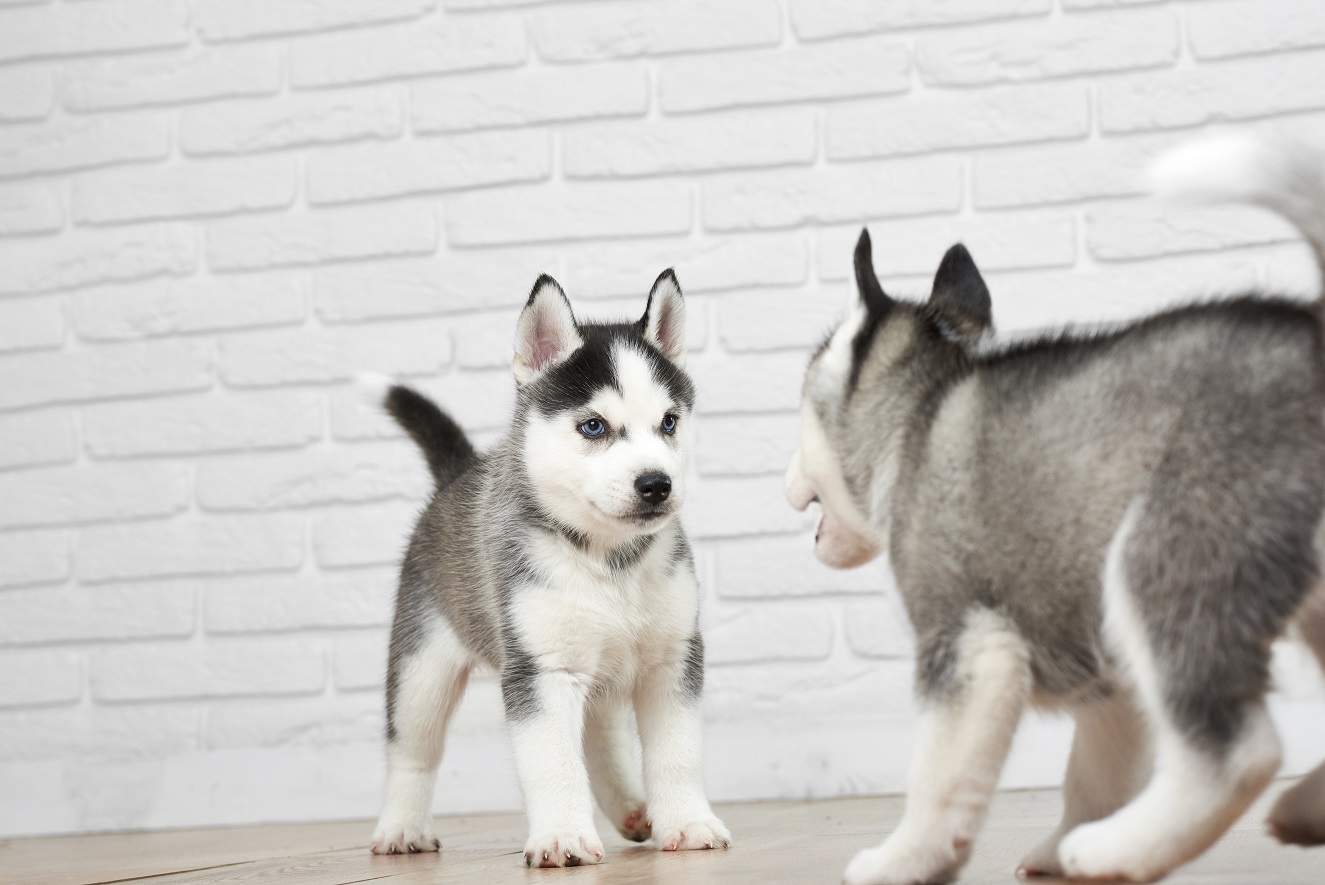
Final Thoughts
A Husky might be stubborn, but don’t forget – they’re smart too. So provided you use the right methods, potty training needn’t be a chore.
Assert yourself as their leader, learn the power of rewards, and repeat, repeat, repeat.
Do those things, and you’ll be well on your way to potty training success.
Above all else, remember you’re dealing with a puppy. There are going to be accidents along the way. A few little setbacks are to be expected.
Keep patient, keep kind, and keep consistent. Manage that, and those little setbacks will soon become a thing of the past.
